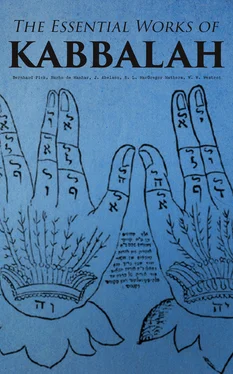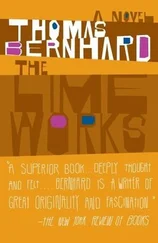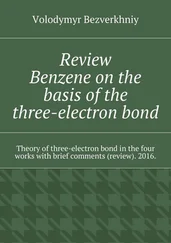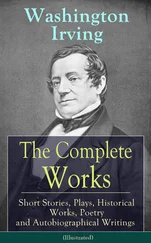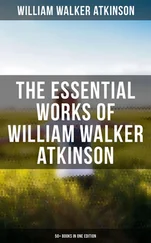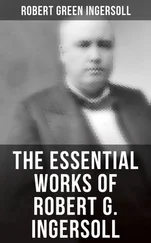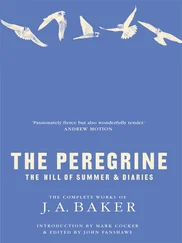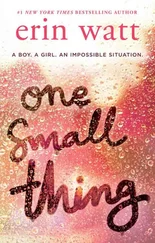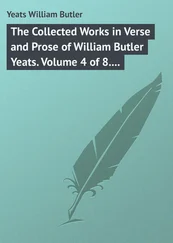Bernhard Pick, Nurho de Manhar, J. Abelson, S. L. MacGregor Mathers, W. W. Westcot
The Essential Works of Kabbalah
The Core of Mystic Wisdom
e-artnow, 2021
Contact: info@e-artnow.org
EAN 4064066388744
The Cabala (Bernhard Pick) The Cabala (Bernhard Pick) Table of Contents Foreword CHAPTER I. NAME AND ORIGIN OF THE CABALA. CHAPTER II THE DEVELOPMENT OF THE CABALA IN THE PRE-ZOHAR PERIOD. CHAPTER III. THE ZOHAR. CHAPTER IV. THE CABALA IN THE POST-ZOHAR PERIOD. CHAPTER V. THE MOST IMPORTANT DOCTRINES OF THE CABALA. CHAPTER VI. THE CABALA IN RELATION TO JUDAISM AND CHRISTIANITY.
Sefer Yetzirah (W.W. Westcot) Sefer Yetzirah (W.W. Westcot) Table of Contents CHAPTER I CHAPTER II CHAPTER III CHAPTER IV CHAPTER V CHATER VI
The Sepher Ha-Zohar (Nurho de Manhar) The Sepher Ha-Zohar (Nurho de Manhar) Table of Contents Preface Introduction. The Lily The Occult Origin Of Alhim The Mysticism Of The Alphabet The Initiation Of Rabbi Hiya The Mysterious Stranger Abundant Goodness Exposition Of Bible Mysteries The Fourteen Precepts Genesis. Part One (I-X) Part Two (XI-XX) Part Three (XXI-XXX) Part Four (XXXI-XL) Part Five (XLI-L) Part Six (LI-LX) Part Seven (LXI-LXX) Part Eight (LXX-LXXX) Part Nine (LXXXI-XC) Part Ten (XCI-CI)
Jewish Mysticism (J. Abelson)
The Kabbalah Unveiled (S. L. MacGregor Mathers)
The Cabala
(Bernhard Pick)
Table of Contents Table of Contents The Cabala (Bernhard Pick) The Cabala (Bernhard Pick) Table of Contents Foreword CHAPTER I. NAME AND ORIGIN OF THE CABALA. CHAPTER II THE DEVELOPMENT OF THE CABALA IN THE PRE-ZOHAR PERIOD. CHAPTER III. THE ZOHAR. CHAPTER IV. THE CABALA IN THE POST-ZOHAR PERIOD. CHAPTER V. THE MOST IMPORTANT DOCTRINES OF THE CABALA. CHAPTER VI. THE CABALA IN RELATION TO JUDAISM AND CHRISTIANITY. Sefer Yetzirah (W.W. Westcot) Sefer Yetzirah (W.W. Westcot) Table of Contents CHAPTER I CHAPTER II CHAPTER III CHAPTER IV CHAPTER V CHATER VI The Sepher Ha-Zohar (Nurho de Manhar) The Sepher Ha-Zohar (Nurho de Manhar) Table of Contents Preface Introduction. The Lily The Occult Origin Of Alhim The Mysticism Of The Alphabet The Initiation Of Rabbi Hiya The Mysterious Stranger Abundant Goodness Exposition Of Bible Mysteries The Fourteen Precepts Genesis. Part One (I-X) Part Two (XI-XX) Part Three (XXI-XXX) Part Four (XXXI-XL) Part Five (XLI-L) Part Six (LI-LX) Part Seven (LXI-LXX) Part Eight (LXX-LXXX) Part Nine (LXXXI-XC) Part Ten (XCI-CI) Jewish Mysticism (J. Abelson) The Kabbalah Unveiled (S. L. MacGregor Mathers)
Foreword
CHAPTER I. NAME AND ORIGIN OF THE CABALA.
CHAPTER II THE DEVELOPMENT OF THE CABALA IN THE PRE-ZOHAR PERIOD.
CHAPTER III. THE ZOHAR.
CHAPTER IV. THE CABALA IN THE POST-ZOHAR PERIOD.
CHAPTER V. THE MOST IMPORTANT DOCTRINES OF THE CABALA.
CHAPTER VI. THE CABALA IN RELATION TO JUDAISM AND CHRISTIANITY.
Table of Contents
Foreword.—Although the Cabala belongs to the past, it nevertheless demands our attention on account of the interest taken in it by men like Raymond Lully, the "Doctor Illuminatus" as he was styled (died 1315) : John Picus di Mirandola (1463-1494); John Reuchlin (1455-1522); Cornelius Henry Agrippa von Nettesheim (14861535) ; John Baptist von Helmont (1577-1644) ; the English scholars Robert Fludd (1574-1637) and Henry More (1614-1687). How much Theophrastus Paracelsus (1493-1541) and Jacob Boehme (1575-1624), called "Philosophus Teutonicus," were influenced by cabalistic doctrines, is difficult to state. At any rate the names mentioned before are sufficient to call attention to a theosophical system which has engaged the minds of Jewish and Christian scholars.
It is surprising how scanty the English literature is on the Cabala. True that in the History of the Jews by Basnage, London, 1708, we have a lengthy account of this theosophy (pp. 184256) ; but this account is originally given in the French work Histoire des Juifs, by the same author. John Gill (died 1771) in his "Dissertatio de genuina Punctorum Vocalium Hebraicorum Antiquitate, contra Cappellum, Waltonwm" etc., prefixed to his Clavis Pentateuchi, Edinburgh, 1770, refers to the Zohar to prove the antiquity of the Hebrew vowel-points, because it states that "the vowel-points proceeded from the Holy Spirit who indited the Sacred Scriptures," etc. (on Song of Songs 57b; ed. Amsterdam, 1701). Of course so long as the Cabala was believed to be a genuine revelation from God, and Simon ben Jochai (of the second century)' was believed to be the author of the Zohar, to whom God communicated all the mysteries, it was but a matter of course to believe in the antiquity and divinity of the vowel-points.
John Allen (died 1839) in his Modern Judaism, London, 1816, (2d. ed. 1830) also gives an account of the Cabala, in which he premises the antiquity of the Zohar, which he makes the primary source of the primitive Cabala. Passing over Dean Milman's (died 1868) History of the Jews, London, 1829, (often reprinted), in which we naturally also find references to the Cabala, we mention J. W. Etheridge (died 1866), author of Jerusalem and Tiberias; Sora and Cordova, a Survey of the Religious and Scholastic Learning of the Jews, Designed as an Introduction to Hebrew Literature, London, 1856. This author seems to have been acquainted with the researches of the Jewish scholars in Germany, but he nevertheless stoutly adheres to the traditional view. Thus he remarks on page 314:
"To the authenticity of the Zohar, as a work of the early Kabalistic school, objections have indeed been made, but they are not of sufficient gravity to merit an extended investigation. The opinion that ascribes it as a pseudo-fabrication to Moses de Leon in the thirteenth century, has, I imagine, but few believers among the learned in this subject in our own day. The references to Shemun ben Yocha'i and the Kabala in the Talmud, and abundant internal evidence found in the book itself, exhibit the strongest probability, not that Shemun himself was the author of it, but that it is the fruit and result of his personal instructions, and of the studies of his immediate disciples."
We may say that Etheridge's view is mutatis mutandis also that of Ad. Franck, author of Systcme de la Kabbale ou la philosophic religieuse des Hebreux, Paris, 1843 (2d. ed. 1892) ; translated into German by A. Gelinek (Jellinek), Die Kabbala oder die Religions philosophic dcr Hebrder, Leipsig, 1844, with which must be compared D. H. Joel, Die Religionsphilosophie des Sohar, ibid., 1840, which is an exceedingly good supplement to Franck's work. But an examination of the works published by Zunz, Die gottesdienstlichen Vortr'dge dcr Juden, Berlin, 1831, p. 405; Geiger, Melo Chofnayim, ibid., 1840, introduction, p. xvii; Sachs, Die religiose Pocsie dcr Juden in Spanien, ibid., 1845, p. 327, Jellinek, Moses Ben Schem Tob de Leon, Leipsig, 1851, could have convinced Etheridge that the Zohar, the text-book of the Cabala, is the "pseudo-fabrication" of Moses de Leon in the thirteenth century. That Landauer (died 1841) in his essays on the Cabala published in the Litteraturblatt des Orients, 1845, p. 178 et seq., 1846, p. 12 et seq., ascribes the authorship of the Zohar to Abraham ben Samuel Abulafia towards the end of the second half of the thirteenth century, is the more weighty and instructive because he originally started with opinions of an exactly opposite character (Steinschneider, Jezvish Literature, p. 299). Nevertheless Etheridge's book was a good work; it was the praiseworthy attempt of an English Christian to acquaint the English-speaking people with the post-Biblical literature of the Jews.
Four years after the publication of the above work, Canon Westcott (died 1901) published his Introduction to the Study of the Gospels, London, 1860, in which he incidentally refers to the Cabala, without adopting Etheridge's view as to the authorship of the Zohar; on the contrary he says (p. 159, Boston, 1867) : "The Sepher haZohar, or Book of Splendor, owes its existence to R. Moses of Leon in the thirteenth century,'' and this, he says in a note, "has been satisfactorily established by Jellinek in his tract, Moses ben Schemtob de Leon und sein Verh'dltniss zum Sohar, Leipsig, 1851. The warm approval of Jost is sufficient to remove any lingering doubt as to the correctness of Jellinek's conclusion: A Jellinek and die Kabala, Leipsic, 1852."
Читать дальше
